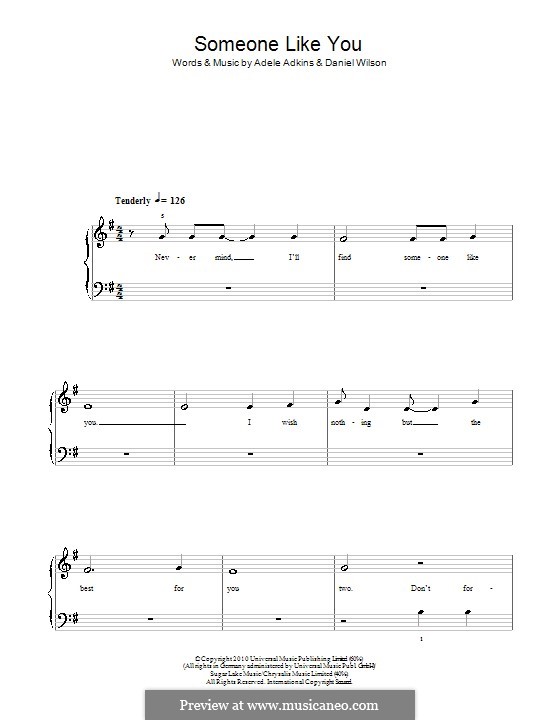

He and his team found that all such musical passages started soft and then became louder featured the “abrupt entrance of a new ‘voice,’ either a new instrument or harmony” typically “involved an expansion of the frequencies played” and, finally, “contained unexpected deviations in the melody or the harmony.”Īccording to the piece, “Someone Like You” is “a textbook example.” You can read their breakdown, complete with audio clips, here. for solo female voice and piano the piano accompaniment plays broken chords. One of these experts studied “the formula for a tearjerker” a few years ago, by picking a few musical excerpts “that reliably produce the chills,” playing those songs for people, and then measuring the heart rate, sweating, and goose bumps of his subjects as they listened. Learn & revise Adeles Someone Like You with BBC Bitesize for OCR GCSE.

SHe is a former piano student who closed the lid on the piano a few years back to pursue more time in sports. All of this was clearly too soft an explanation for the Wall Street Journal, which ran a similar piece over the weekend, drawing on the assistance not of music professors, but of neuroscientists and psychologists. My daughter has been thrilled to get this sheet music.


 0 kommentar(er)
0 kommentar(er)
